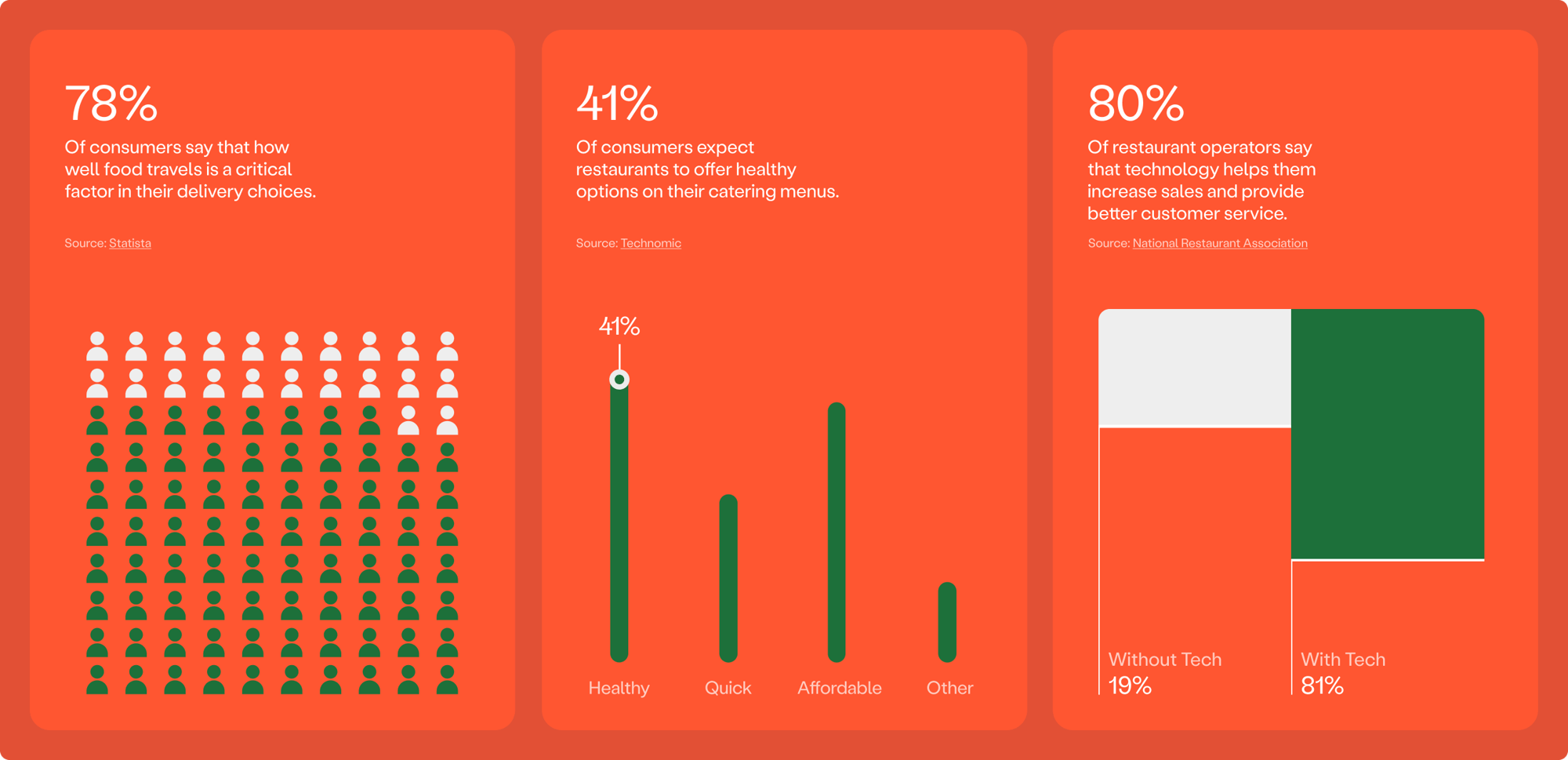Tackling Sports Catering: Building Relationships for Success
Catering is more than just an add-on; it’s a strategic pillar for a robust brand strategy, especially in the restaurant industry. The catering market is projected to reach $328 billion by 2031, growing at a CAGR of 5.6% from 2022 to 2031 (Allied Market Research). Restaurants that harness the power of catering, particularly during peak sports seasons, position themselves ahead of the competition. In fact, sports-related catering can become a significant revenue stream, with sports catering specifically contributing an estimated $25 billion annually to the industry (National Restaurant Association, "2023 State").
For many restaurants, the most active months of the year span from April to September. This period covers major sports events, including football, baseball, and other seasonal sports, which offer ample opportunities to capture catering revenue. Leveraging these events requires a strategic “Block and Tackle” approach—utilizing existing relationships to drive new business and garner referrals. A well-developed catering channel during these peak times can mean the difference between a good year and a great one.

Establishing a Successful Sports Catering Program
Creating a successful catering program involves several critical components: Menu, Team Members, Technology, and a solid Action Plan. According to the National Restaurant Association, 60% of consumers order out at least once a week (Hospitality Tech), making a well-crafted menu essential. Developing a desirable menu for catering is more than just offering a wide variety; it’s about strategically selecting items that are easy to execute, travel well, and meet the dietary needs of diverse groups. Simplicity is key—overwhelming guests with too many options can lead to decision fatigue and operational inefficiencies.
The average food cost in the restaurant industry typically hovers between 28-35% of total revenue (U.S. Department of Agriculture). Therefore, it’s crucial to maintain a balance between menu diversity and profitability. Opt for items that can be prepared quickly, with minimal labor, and that hold up well during transport. For sports catering, where orders often involve feeding large groups, these considerations are even more important.
The Complexity of Sports Catering
Sports catering introduces another layer of complexity. Teams and their staff often have specific dietary needs, from high-protein meals for athletes to accommodating food allergies and preferences. According to a survey by Technomic, 41% of consumers expect restaurants to offer healthy options on their catering menus (Technomic). Being able to accommodate these needs with custom menu items can set your brand apart from competitors.
Additionally, your team plays a vital role in ensuring that every order is executed flawlessly. While perfection might be unattainable, aiming for perfect execution strengthens relationships and fosters repeat business. Timing is everything in sports catering—teams operate on tight schedules, and a delay can disrupt their entire itinerary. Collaborate closely with your clients to determine the optimal time for pickup or delivery, especially for traveling teams where precision in timing is paramount.
Developing a desirable menu for catering is more than just offering a wide variety; it’s about strategically selecting items.
The Role of Technology in Sports Catering
Technology is a critical enabler in sports catering, particularly when dealing with institutional clients like collegiate teams. These teams often fall under tax-exempt status, so having a technology platform that can easily accommodate tax exemptions and streamline invoicing is essential. According to a report by the National Restaurant Association, 80% of restaurant operators say that technology helps them increase sales and provide better customer service (National Restaurant Association).
An integrated tech stack not only simplifies the operational process but also enhances the client experience. By automating invoice processing and capturing client data, you set your team up for success in handling future orders. Efficiency in these areas allows you to focus on what really matters—delivering exceptional food and service.
Conclusion
Sports catering is more than just an additional revenue stream—it’s an avenue to build lasting relationships and enhance your brand's reputation. By leveraging the peak sports seasons, focusing on precise execution, and using technology to your advantage, you can create a catering program that not only meets but exceeds expectations. With the right strategy, your restaurant can score big in the sports catering arena, one satisfied client at a time.
1. Allied Market Research. Catering Services Market by Type and End-User: Global Opportunity Analysis and Industry Forecast, 2022–2031. Allied Market Research, 2022. https://www.alliedmarketresearch.com/catering-services-market.
2. Technomic. "The State of Healthy Eating in Foodservice." Technomic Consumer Trends Report, Technomic, 2022. https://www.technomic.com/healthy-eating.
3. National Restaurant Association. "2023 State of the Restaurant Industry." National Restaurant Association, 2023. https://restaurant.org/research-and-media/research/reports/state-of-the-restaurant-industry.
4. National Restaurant Association. "How Technology Can Help Restaurants Thrive." National Restaurant Association, 2023. https://restaurant.org/research-and-media/research/research-reports/2024-technology-landscape-report/.
5. U.S. Department of Agriculture. "Food Costs: Percentage of Total Revenue in the Restaurant Industry." USDA Economic Research Service, 2023. https://www.ers.usda.gov/topics/food-choices-health/food-consumption-demand/food-away-from-home.
6. Statista. "Consumer Preferences for Food Delivery in the U.S. in 2023." Statista Research Department, 2023. https://www.statista.com/statistics/1103514/us-consumer-preferences-food-delivery-criteria/.
